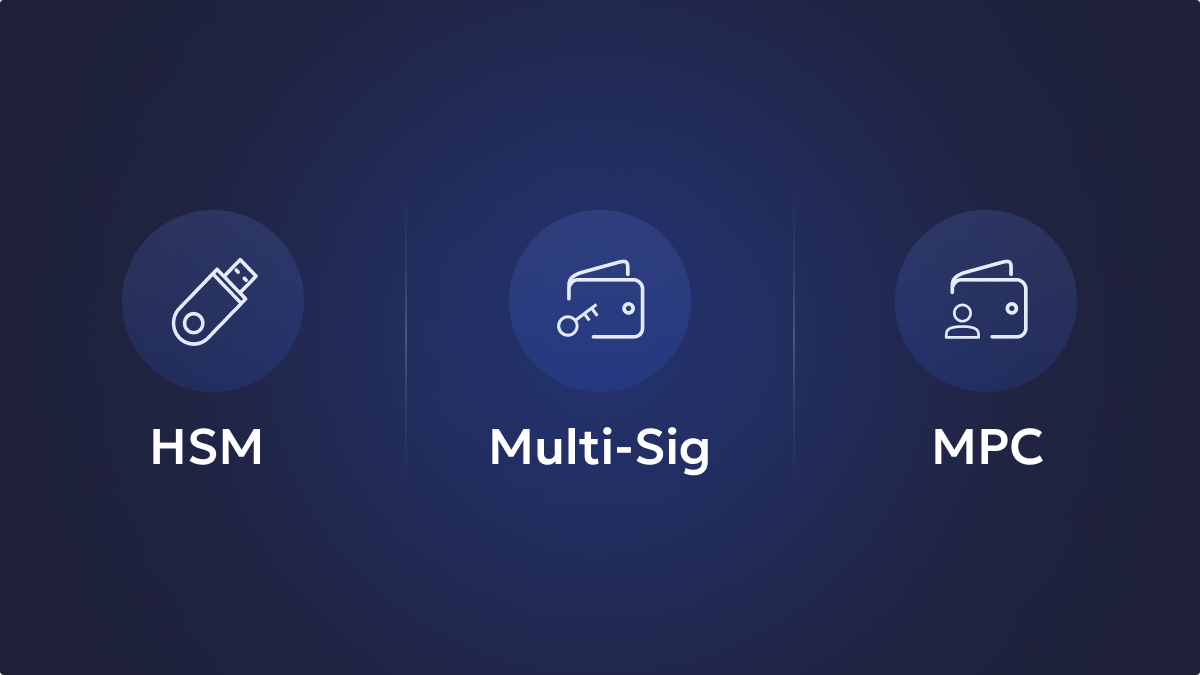The anonymous Plan B proposed a bitcoin stock to flow chart in 2019. The stock-to-flow seeks to display the Bitcoin revaluation behaviour graphically.
Bitcoin stock-to-flow plan B’S model helps show how Bitcoin’s value might change over time. Stock-to-flow predicts how valuable Bitcoin could become in the future. The model generates a predictive chart that goes year by year until 2028.
The Bitcoin stock-to-flow model live chart models how much Bitcoin might be worth each year until 2028. Over time, we could see if the predictions made by the model were fulfilled with a certain margin of error.
The Bitcoin stock to flow Prediction model also considers the next Bitcoin halving event – since the next halving event will immediately impact the price. When halving happens, fewer bitcoins are made, meaning greater scarcity.
Unlock the potential of digital assets for your institution
Key Takeaways
Stock to flow models help you assess the new supply of bitcoin relative to the existing supply.
Bitcoin stock-to-flow chart/ model allow the investor to estimate how much Bitcoin might be worth in the future.
Bitcoin is different from many other assets because the amount of new Bitcoin in supply is always the same, regardless of the price.
What is Bitcoin?
Bitcoin is a digital currency that uses peer-to-peer technology to support transactions. Bitcoin works without a centralized authority or banks. The network collectively manages transactions and mines new bitcoins.
Bitcoin’s design is open to the public. Anyone can be a part of the Bitcoin network. It’s not owned or controlled by corporations. Because of its P2P technology and other unique features, Bitcoin can do things that no other payment system could.
Secure and manage your digital assets with Liminal
What is Stock-to-Flow?
The stock-to-flow model is a way to figure out how valuable a commodity or asset is – cryptocurrency such as Bitcoin. The model assesses two attributes: stock and flow.
For instance – In the case of bitcoin, the amount already there will be referred to as stock and the total amount of new bitcoin mined and added each year will be termed flow.
Let’s use gold to explain. In history, about 187,000 metric tonnes of gold have been found, the total amount of gold ever mined. Gold doesn’t disappear, so most gold is still around.
Now, let’s see how much gold is found each year. It’s about 3,000 tonnes, according to experts. This is what we call the flow.
To determine the stock-to-flow ratio for gold, we divide the total gold (stock) by how much is added each year (flow). So, it’s:
187,000 / 3,000 = 62.3
This number tells us that it would take around 62 years to find the same amount of gold we have right now. When the stock-to-flow ratio is higher, the thing is rarer or harder to find.
How is the stock-to-flow model used for Bitcoin?
One interesting thing about Bitcoin is that we know exactly how much new Bitcoin comes into the world each year. This makes it possible to predict Bitcoin’s stock-to-flow very accurately. This differs from other things, like gold or silver, where we’re not sure how much is being produced.
There will be 21 million Bitcoins in total, but around 19.2 million have already been made. New Bitcoins are created when miners confirm transactions on the blockchain, following a predetermined schedule. The last Bitcoin will be made in the year 2140.
Right now, miners get 6.25 new Bitcoins for every block they confirm. Since a block is confirmed every 10 minutes, about 328,500 Bitcoins are made yearly. This makes the current Bitcoin stock-to-flow Prediction ratio:
19,171,050 (total Bitcoins) / 328,500 (new Bitcoins each year) = 58.35
But Bitcoin’s supply increases at a different rate all the time. Every four years, something called a halving happens. This means the number of new Bitcoins made for confirming a block gets cut in half. The most recent halving was in 2020, and the next will be around 2024. So, when the next halving happens, the reward for confirming a block will be 3.125 Bitcoins. This will make the new supply of Bitcoin smaller, so the stock-to-flow ratio will become twice as big.
Factors That Affect Bitcoin Stock-to-Flow (Note: also discuss the cross assets model)
A lot of things can affect how the Bitcoin stock-to-flow model live chart works. Let’s look at these factors more closely.
- Halving Events: The Bitcoin stock-to-flow chart model is heavily influenced by Bitcoin’s halving events that take place approximately every four years. This event changes the total amount of new bitcoins generated and makes Bitcoin rarer. It impacts the stock-to-flow model ratio.
- Market Demand: The demand for Bitcoin – investors who want to buy Bitcoin can change how its stock-to-flow works. If more people want it, the price can increase, which changes the stock-to-flow.
- Adoption and Awareness: How many people are using and talking about Bitcoin as a valuable asset and store of value can influence the stock-to-flow. If more people start using it, its value might go up.
- Market Sentiment: The stock-to-flow dynamics can change if the investors feel good about Bitcoin and the crypto market. Prices might go up when investors are positive, but if they are worried, it can negatively change the stock-to-flow.
- Regulatory environment: Regulations, policies, and laws around Bitcoin can change bitcoin stock-to-flow plan B’s model. Suitable regulations and clear legal frameworks can have a positive impact, leading to increased adoption.
- Economic Factors: The existing economic conditions, such as inflation rates, monetary policies, and global economic stability, can affect the bitcoin stock-to-flow Prediction ratio. If the economic condition is uncertain, investors might want Bitcoin to protect their money by hedging against traditional financial assets.
- Technological Improvements: If Bitcoin’s technology gets better, like being faster, more scalable, or more private, it can change the bitcoin stock-to-flow plan B’s model dynamics. A major improvement in the bitcoin network can drive up the demand and might positively affect market perception.
- External Events: Massive events happening across the globe, like hacks, cybersecurity breaches, or geopolitical tensions, can affect the stock-to-flow ratio for Bitcoin – driving demand up or down.
Bitcoin stock to flow model toolkit.
The stock-to-flow has two parts: stock and flow. For bitcoin, stock is how many are available now, which is 19.19 million. Flow is how many new ones are made each year and added to the total.
The math for this looks like this: Stock divided by Flow equals the SF Ratio.
Right now, the bitcoin stock is 19.19 million.
The flow, or how many new bitcoins are made annually, is about 356,029. That’s almost 975 bitcoins made every day.
So, if we do the math, the SF Ratio is 53.9. This number shows that it would take 53.9 years to make as many bitcoins as there are right now.
Keep in mind that flow changes for a few reasons:
- The difficulty of mining changes.
- The Bitcoin network might get too busy.
- The cost of the machines used to mine bitcoins changes.
- Special events called halvings also change how many new bitcoins are made.
Is the Bictoin Stock-to-Flow Ratio a Good Model?
In the long run, yes, the S2F model seems right. Well, at least it was until last year. But in the short term, Bitcoin is not doing what the model says it should.
But this has happened before, where the model’s prediction didn’t come true, and yet, Bitcoin’s price eventually went back to what the model expected.
For example, if we used the S2F model from 2013 to 2015, it would have been wrong, as seen in the Bitcoin stock-to-flow model live chart.
But you can also notice that after this mistake, Bitcoin’s price did match the S2F model until the middle of last year (2021).
So, it’s possible that the model is still right, but unexpected things like the war in Ukraine or the Covid-19 pandemic can make Bitcoin’s price change more than the Bitcoin stock-to-flow plan B’s model can figure out.
Other BTC Forecasting methods
Even though it’s hard to predict the price of Bitcoin, many different ways are being used to try and figure it out.
There are other methods, too:
- Eliot Wave Theory: The Elliot wave theory studies patterns in the way Bitcoin’s price moves. The theory considers that the market goes up and down cycles, and it tries to predict these cycles based on how people feel about the market – crowd psychology.
- Fulcrum Index: Greg Foss, who has years of experience in credit markets, came up with this theory. The Fulcrum index theory sees Bitcoin as an insurance for worldwide sovereign debt. The person behind this theory believes the price of Bitcoin could be between $108,000 and $160,000, but this is more of a long-term view.
We’ll have to wait and see if these theories work in the long run. For now, figuring out the price of Bitcoin is still a big challenge.
How to Trade Crypto Using the S2F Model
Even though the stock-to-flow model for cryptocurrencies has some problems, it could still be helpful for trading. The idea is that if a cryptocurrency’s stock-to-flow ratio goes up, its value could also go up based on what’s happened in the past. This connection can guide people in deciding where to put their money.
If the stock-to-flow ratio is really high, like 50 or more, the cryptocurrency is rare compared to how much is produced, so its value might rise. Someone who sees this high ratio might sell some of their cryptocurrency while the price is high. On the other hand, if the ratio is low but expected to rise later on, they might choose to buy more.
Even though the stock-to-flow model isn’t perfect, it can still be a good strategy for dealing with cryptocurrencies. When considering investing in cryptocurrencies, this model is a forecasting tool that can help predict what might happen.
Conclusion
Simply put, the Bitcoin stock-to-flow live chart model is a helpful indicator in finance, even though some people have doubted its accuracy. This tool has been used for valuable things like gold and silver. Now, it’s being applied to Bitcoin, which could make Bitcoin even more valuable if more people start using it. It would help if you were not too concerned about people wanting it because cryptocurrency is becoming more popular, and its value should increase over time.






